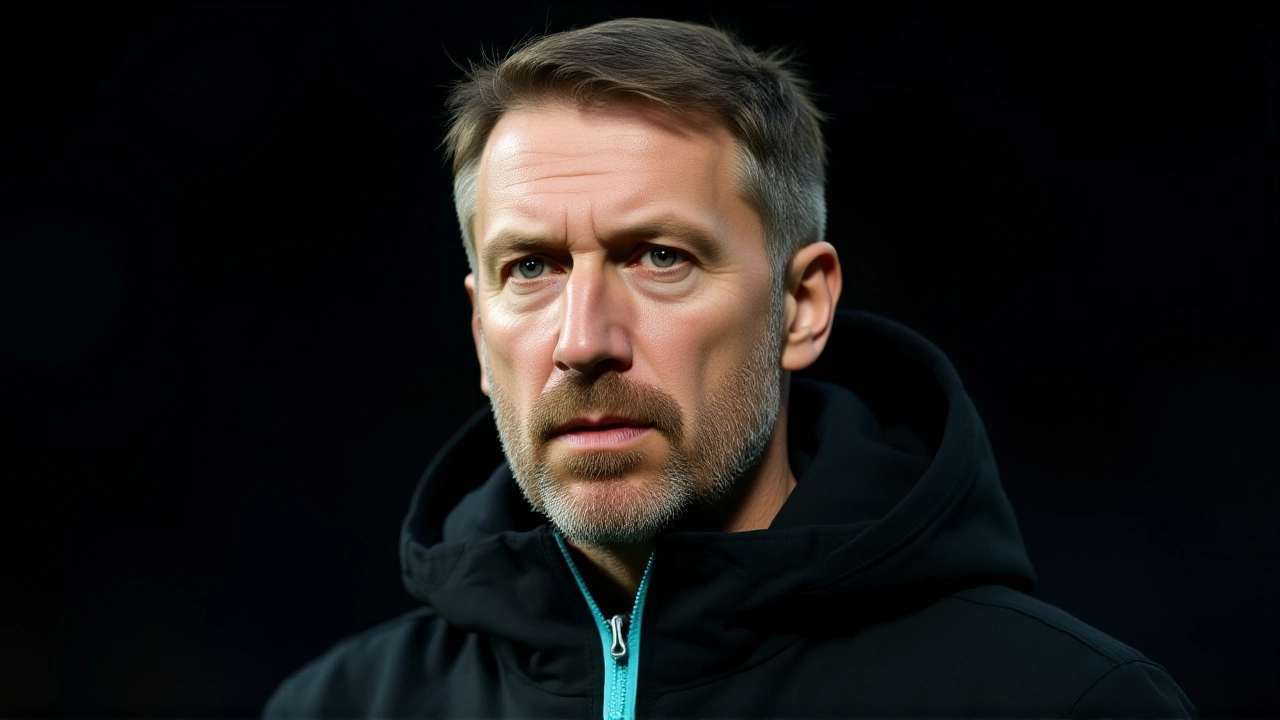When Graham Potter walked into the London Stadium on January 8, 2025, the buzz was unmistakable: the former Chelsea boss was inches away from taking over the helm at West Ham United and steering the Hammers out of a mid‑table slump.
Why Potter’s Return Matters
Potter’s résumé reads like a modern‑day football road‑trip. After turning the odds on their head at Brighton & Hove Albion – guiding the Seagulls to a club‑record ninth‑place finish in 2021‑22 – he earned a high‑profile, albeit brief, spell at Chelsea Football Club. His departure in April 2023 left a vacuum that many clubs have since tried to fill.
West Ham, sitting 13th when the talks were reported, needed more than a stop‑gap. Julen Lopetegui had left the club after a turbulent 2024‑25 run, and the Hammers were desperate for a fresh tactical vision that could revive a leaky defence and sputtering attack.
The Negotiations and Immediate Impact
According to Sky Sports senior reporter Rob Dorsett, both sides expressed optimism after a series of positive meetings on Wednesday morning. If the deal went through, Potter’s first test would be the FA Cup third‑round tie against Aston Villa on January 10. The prospect of a debut in a knockout match added a dramatic flair – imagine a new manager’s baptism by fire.
Potter’s early minutes in charge have already produced a mixed picture. In his first ten Premier League outings, West Ham have found the net just ten times, a statistic that lit a fire under the club’s hierarchy. Yet the defensive line, once porous, has shown glimpses of cohesion, conceding fewer goals than under Lopetegui’s brief tenure.
Club, Fans and Rival Interest
West Ham’s board has publicly granted Potter a runway until the 2025‑26 campaign, treating the remainder of the current season as an extended pre‑season. Executive director Karren Brady hinted that the club views the summer transfer window as a make‑or‑break moment, especially given lingering financial uncertainties.
Meanwhile, Everton Football Club has been quietly monitoring Potter’s situation. Everton’s manager Sean Dyche faces growing pressure, and the Toffees’ hierarchy reportedly believes a Potter‑led West Ham could become a direct competitor for top‑six spots.
Supporters, however, remain cautious. A poll on the official West Ham forums showed 58% of respondents were “optimistic but not convinced,” while a rival fan site, The West Ham Way, ran a thread titled “Potter’s 2.5‑Year Plan – Dream or Delusion?” The thread highlighted concerns over squad depth and the club’s ability to fund a major overhaul.
Summer Transfer Strategy: Who’s In, Who’s Out?
Potter has already signalled his intent to reshape the roster. The first name on the chopping block appears to be centre‑back Konstantinos Mavropanos. Purchased for £20 million from VfB Stuttgart in 2023, the 26‑year‑old has struggled for game time under both Moyes and Lopetegui, and Potter has reportedly earmarked him for sale to free up wages.
Left‑back Emerson Palmieri is next in line. Having arrived from Chelsea for £13 million in the summer of 2023, Palmieri fell out of favour after Ollie Scarles cemented the starting spot. If Potter follows the pattern set at Brighton, he will target younger, more versatile players who fit his possession‑based philosophy.
On the acquisition front, the Hammers are said to be circling several midfield talents, including a possible loan for Brazilian playmaker Lucas Paquetá once his national‑team duties settle down. Dutch winger Crysencio Summerville is edging back from a long injury lay‑off, while Brazilian winger Luis Guilherme impressed in a behind‑closed‑doors friendly against Watford.
- Potential departures: Mavropanos (£20 m), Palmieri (£13 m)
- Targeted signings: Paquetá (loan), Summerville (return from injury), additional midfield depth
- Budget concerns: club still negotiating a £50 m loan facility with lenders
Potter’s Tactical Blueprint
In a candid Sky Sports interview ahead of the new season, Potter described his side as “a work in progress.” He referenced his favourite formations – a fluid 3‑5‑2 that can morph into a 3‑4‑3 or a classic 4‑2‑3‑1 – emphasizing high defensive lines and patient buildup. The Hammers, he noted, need to blend defensive solidity with attacking flair, a balance he achieved at Brighton with players like Tariq Lamptey and Yves Bissouma.
Statistically, West Ham’s possession under Potter has climbed from 48% in his first three matches to 55% after ten games, but their final‑third conversion rate remains stubbornly low at 9%. Potter’s promise to “keep fighting every day to improve” reflects a realistic view of the rebuilding process.
Looking Ahead: The 2025‑26 Ambition
The real test comes when the Hammers kick off the 2025‑26 Premier League campaign against newly promoted Sunderland. Potter’s 2.5‑year contract includes clauses for European qualification, an expanded academy pathway, and a more entertaining brand of football for the fans.
If the summer transfer window delivers, analysts from The Athletic predict West Ham could finish as high as seventh, potentially snatching a Europa League spot. Conversely, a failure to offload high‑wage players could see the club stuck in a financial bind, limiting its ability to compete with wealthier rivals.
Key Facts
- Negotiation date: 8 January 2025
- First match: FA Cup vs Aston Villa, 10 January 2025
- Current league position: 13th (March 2025)
- Goals in first 10 PL games: 10
- Contract length: 2.5 years, with performance‑related bonuses
Frequently Asked Questions
How will Graham Potter’s tactics change West Ham’s style of play?
Potter favors a high‑press, possession‑centric approach that relies on a fluid back three and interchangeable midfielders. Expect West Ham to keep the ball longer, push their defensive line higher, and use wing‑backs like Oliver Skipp to overload the flanks, ultimately aiming for more controlled attacks rather than direct counter‑punches.
Which players are most likely to leave the club this summer?
Centre‑back Konstantinos Mavropanos and left‑back Emerson Palmieri have been named early targets for off‑loading. Both arrived on sizeable fees in 2023 but have struggled for minutes, making them logical candidates for sales to balance the books.
What does West Ham’s board see as the realistic target for the 2025‑26 season?
Club executives have spoken of a “European qualification” goal, which realistically translates to finishing between sixth and eighth in the Premier League. Achieving that will depend on a successful transfer window and Potter’s ability to tighten the defence.
Could Everton become a rival for Potter if West Ham succeeds?
Everton’s interest in Potter has been reported as a contingency plan if his stint at West Ham falters. Should the Hammers climb the table, it would likely diminish Everton’s lure and keep Potter focused on delivering his project.
What financial challenges could hinder West Ham’s summer rebuild?
The club is still negotiating a £50 million loan facility with its lenders. Without clear refinancing, the Hammers may struggle to fund multiple high‑profile signings, forcing them to prioritize squad balance over marquee purchases.



